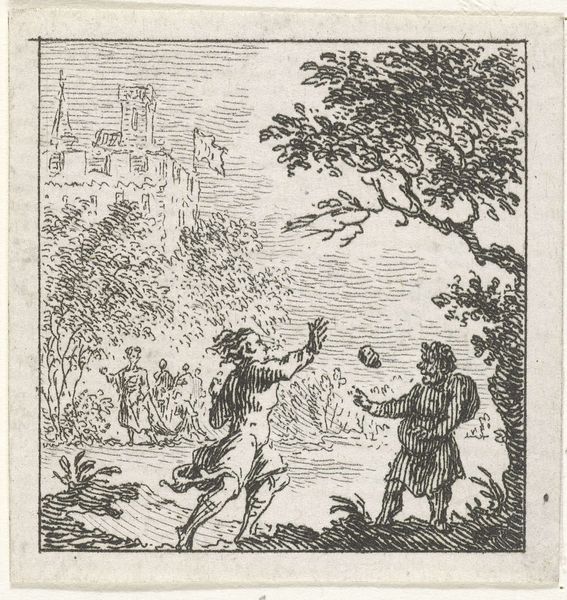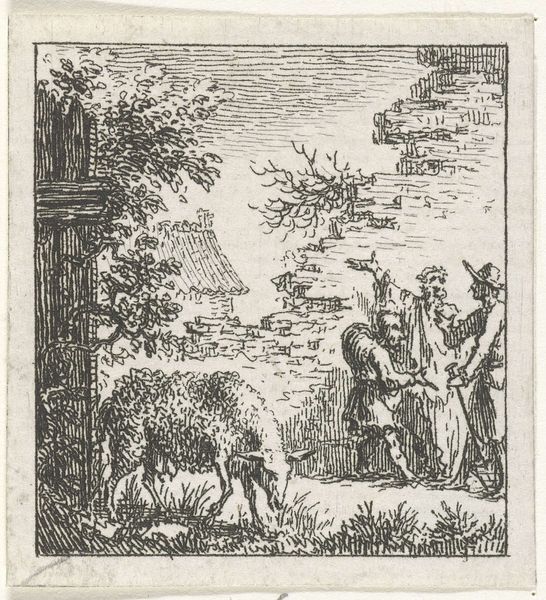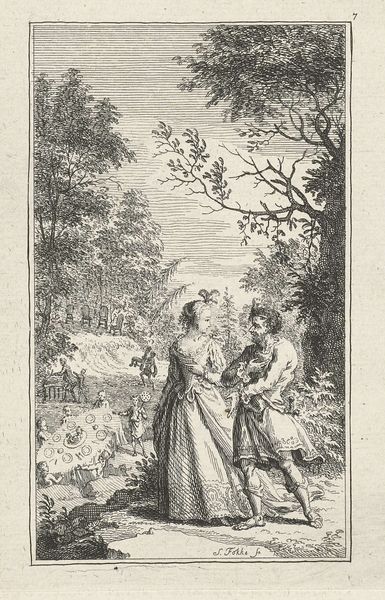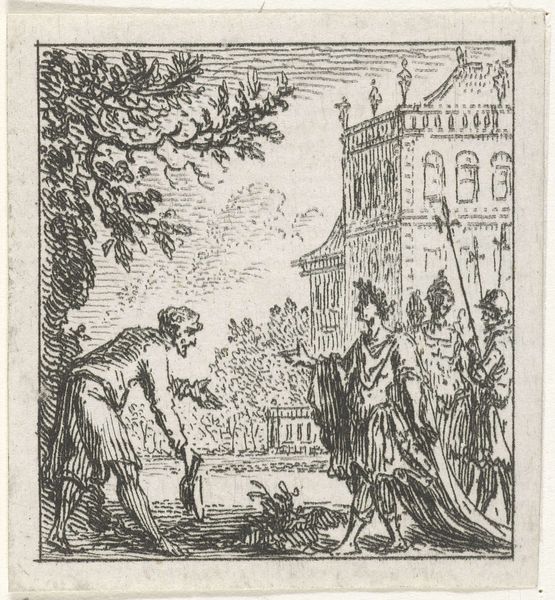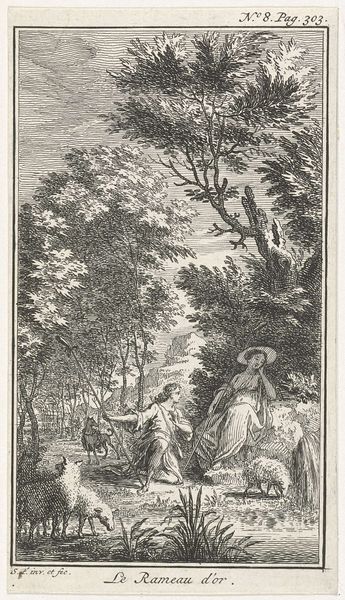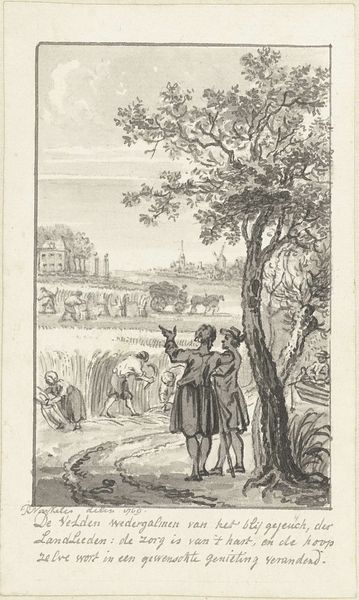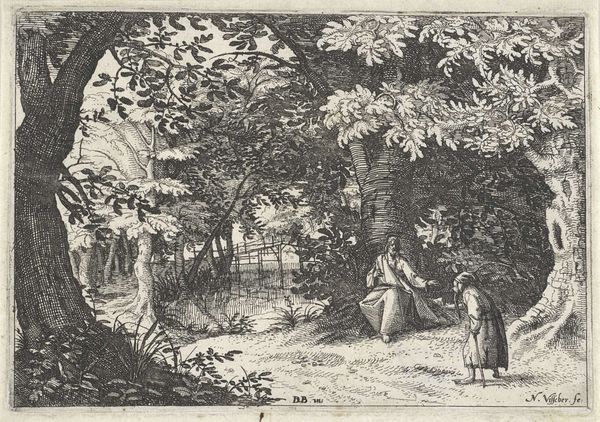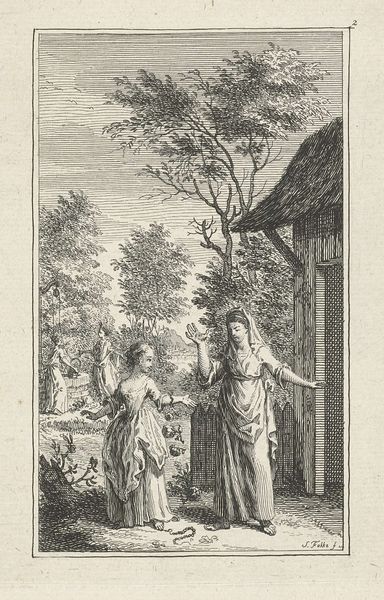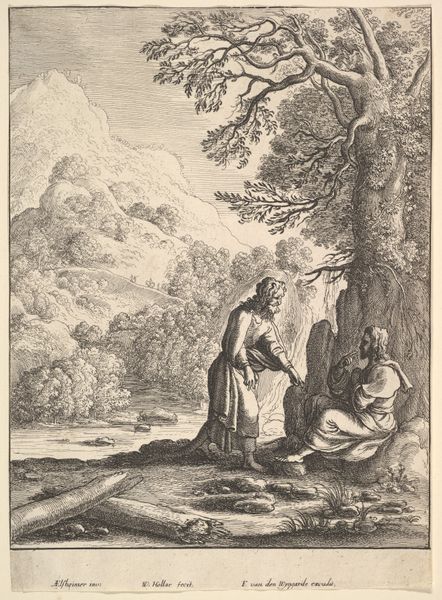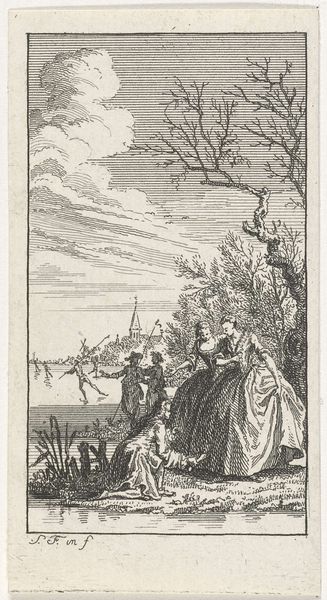
Dimensions: height 43 mm, width 41 mm
Copyright: Rijks Museum: Open Domain
Curator: Looking at "Fabel van de oude vrouw en de wijnkruik" created in 1769 by Simon Fokke, currently residing at the Rijksmuseum, what's your initial read of this etching? Editor: Immediately, there’s a compelling visual dichotomy. The stark, almost frantic, linework gives the entire piece a sense of unease despite its quaint subject matter. The stark hatching to render the trees is quite aggressive. Curator: Yes, Fokke’s use of etching certainly conveys a strong textural presence. The layering of lines contributes significantly to the narrative he presents. We see a clear class divide here too, a carriage contrasts the old woman carrying what seems like an empty wine jug. The history-painting aspect of the work definitely hints at social commentary, how the production and consumption of alcohol affected everyday life. Editor: Precisely! Let’s not overlook the composition, though. See how Fokke places the old woman, a symbol perhaps of age or destitution, directly beneath the dark canopy of the tree. This overshadowing is quite deliberate, wouldn't you say, adding a layer of semiotic weight? Also, the vessel has symbolic properties, the line engraving detail provides textural contrast to the smoothness and simplicity of her garment. Curator: Absolutely, her posture as she strains is quite telling about labor. It reminds us of the role that older, often overlooked, individuals played in the societal fabric, their consumption needs being an allegory for labor conditions. Moreover, let's consider how the widespread accessibility of prints influenced artistic styles and broader social attitudes during that period. Editor: I appreciate how the background elements such as the carriage in the distance and the distant architecture frame the figure and emphasize her place in the narrative’s space. Even the slightly awkward perspective seems deliberate, underscoring the imbalance and disharmony within the scene. The very precise and economical line detailing really defines the work here. Curator: This piece encapsulates elements that challenge rigid artistic hierarchies. Fokke’s attention to mundane materials is evidence of broader societal issues and makes it far more relevant than many historical portraits that depict grandeur without addressing lived experiences. Editor: An efficient exploration using visual rhetoric. Overall, Fokke has imbued a quiet landscape with so much implied criticism and stark realism that continues to provoke reflection centuries later. Curator: Agreed. Through Fokke’s lens, we recognize not just a scene but a societal discourse rendered meticulously via the intricate technique of engraving.
Comments
No comments
Be the first to comment and join the conversation on the ultimate creative platform.

